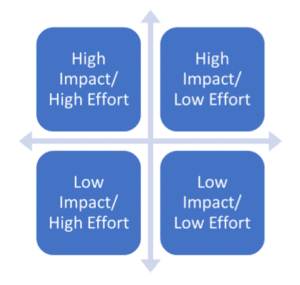While many of us would gladly put up the Christmas tree now and call it a year if we could, there are still a couple of months of growth left in 2020. But, there’s not much time left to start your 2021 planning.
To call 2020 a weird year is probably a bit of an understatement and, for most, it has been about survival. But, for all its challenges, just about every business owner I speak to tells me 2020 has delivered one big positive – it has forced them to get back to the core of their business and truly understand their customers. For those businesses who were able to act swiftly enough, this deep customer understanding has allowed their business to really thrive this year. This customer-centricity really is the secret to business success.
So, while it might feel a little premature to be submitting plans for 2021, it’s actually very wise – assuming we all learn the lessons from this year and make them flexible, agile and customer-centric. While I certainly hope we don’t ever have a change in Alert Levels again, and I hope New Zealand’s borders will re-open soon, the reality is we need to prepare for various scenarios.
On this note, the impending Christmas and New Year period might just be a little different to usual, with many of the kiwis who usually use the holiday period to shoot off overseas, now likely to be staying local – potentially leading to increased demand across many markets.
Something for all of us to keep in mind…
How To Plan For 2021
1. Set goals (now!)
Set your goals based on your answers to these two critical questions:
- How much profit do I want to make?
- When and for how much do I want to sell my business?
Having clearly defined answers to these questions will allow you to set meaningful goals and to make decisions that help you achieve them. Make sure you run every decision you make through these filters. Does this decision help me achieve the answers to these questions?
If ‘yes’, then prioritise the action according to the impact and effort involved.
If ‘no’, don’t do it!
2. Prioritise
Profit Prioritisation Exercise

Process Steps:
1/ List down all opportunities & ideas
2/ Rank by quantum of potential profit
3/ Rank by effort required- plot on chart
4/ Immediate priority should be on High Impact/ Low Effort. Second priority is a choice between high impact/ high effort and Low impact/ low effort with consideration to short term and strategic goals. Often low impact/ high effort ideas are discarded or kept for consideration at a later date.
All business have finite resources and have to make trade off decisions, prioritisation is critical to enable the maximum returns from available resources.
3. Validate with data
Wherever possible, use data to validate your decisions. Here at Grow NZ, we have helped many businesses to generate profitable cash flow in 2020 using quality data analytics. Our marketing strategy service is a terrific example of this.
4. Embed accountability
Once a goal is determined, allocate responsibility and measures for getting it done. When we set a goal and measure performance against that goal, we can hold ourselves (and others) accountable for achieving it. Check out what Forbes has to say about how measurement can motivate.
5. Consistently review
2020 has been a big reminder that markets change, consumers change and competitors like to change things up too!
If you can work through the above before Christmas, you’ll be in pretty good shape for a relaxing break to prepare yourself for a fruitful 2021 – well prepared is well armed!

